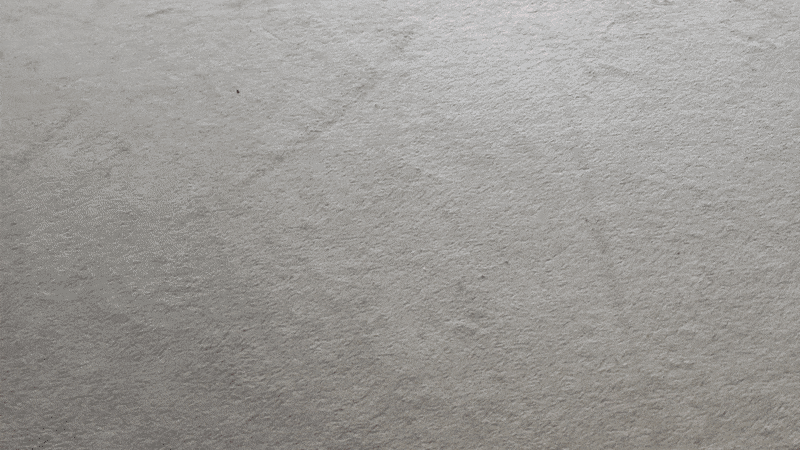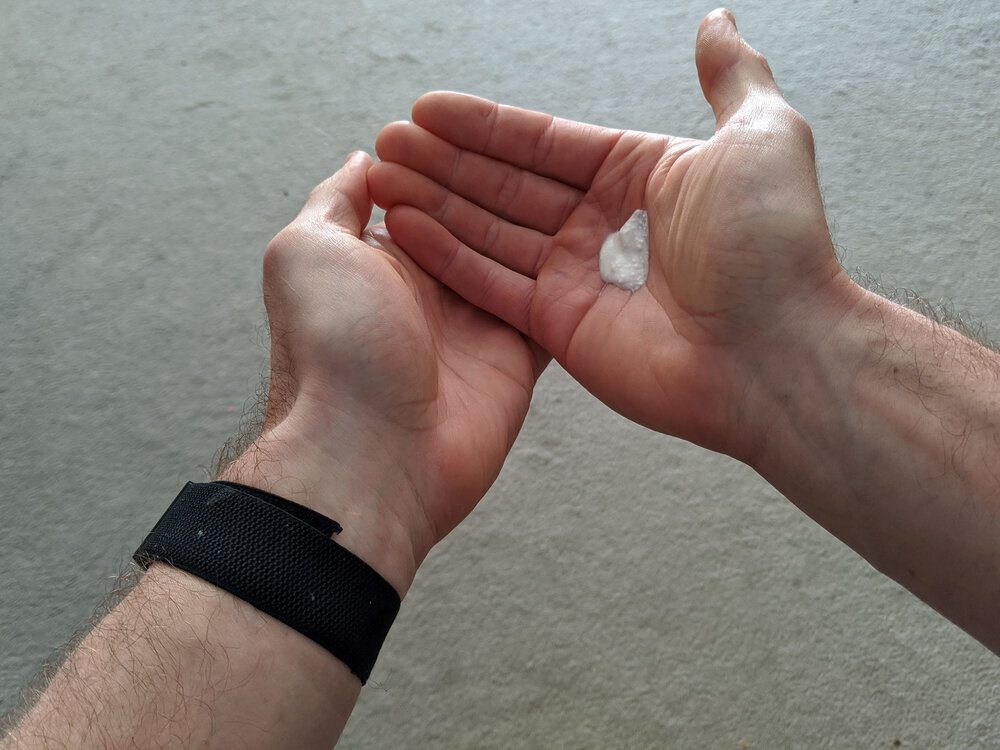
Chalk. It's a key ingredient to climbing, the powder of maximum sendage. Think Popeye's spinach, Ramjets proton pill or Ondra's screams. It's the gym climbers (not-so-secret) secret weapon.
We chalk-up between climbs, during climbs, while we chat, sometimes we even chalk-up before we go on belay and play it off as a vicarious act of solidarity with our partner. We chalk-up before we clip, after we clip, while we rest and while we're bugging out… We chalk a lot.
So what happens when we have to change the way we use our favourite guilty indulgence?
A formal community decision has been made to restrict the use of loose chalk in climbing gyms (more on this below). And with this recent shift away from loose chalk and toward liquid chalk, many people are going to be squirting onto their hands for the first time in their climbing career.
Here's some info on why the shift is happening and how to make the most of it.
Liquid chalk (like most climbing jargon) follows the simple rule of just being what it's called. It's pretty much just climbing chalk in liquid form.
For a more scientific explanation, liquid chalk is a combination of:
Alcohol (the liquid) - usually 70% or more isopropyl or denatured-ethanol, the rest being water
Magnesium carbonate (the chalk) - climbing chalk is almost all this type of chalk, sometimes with added drying agents or stuff that smells good.
The alcohol soaks into the chalk and helps spread it evenly on your hands, then gradually dries out taking a bit of moisture and any residual water with it, leaving a nice even coating of that chalky goodness on your mits.

Okay, so it's not really very scientific, but it is cool…
Liquid chalk is just dry chalk suspended in alcohol. The main benefit is that it spreads and coats evenly onto your fingers and hands, which means it lasts longer and you don't have to use nearly as much to get that crisp, dry, chalky feeling.
Less dropped/spilled/floaty chalk is not only better for the environment and your local wall/crag, but it's also great for your health. Floating particles can make their way into your lungs, onto surfaces and can carry nasties like viruses with them.
If you're used to shoving your hand into an overflowing chalk bag and scooping up that powdery goodness, you'll be glad to know that a similar effect can be had by adding about a pea-sized blob of the funny-runny to your hands. Yep, you only need about as much toothpaste as you'd put on your toothbrush for that ghostly-white grip.

You really only need about as much as a small bird poop.
Unless you've been lucky enough to be living under a rock (or in a sweet boulder cave) for the past few months, you'll understand that things have changed.
One of the most important developments from the recent COVID-19 period is the heightened awareness and mitigation of risk associated with the transmission of germs, disease, viruses, etc. in our day-to-day. One of the stand-out aspects of a climbing gym is that the chalk we all love to use so much generally ends up in about a 50-50 split between being on our hands and literally everything else. What's unfortunate about that is that it creates a vehicle for little virus jerks to travel on, and so it needs to be reduced in use.
This is where liquid chalk comes in… Spread less chalk, spread fewer germs!
This has been addressed by the Australian Institute of Sport (AIS) in conjunction with Sport Climbing Australia (SCA) in the ‘AIS Framework for Rebooting Sport’, May 2020. Among other general restrictions such as limiting use of changerooms and maintaining adequate social distancing, climbing gyms are required to limit chalk use to only liquid-chalk until restrictions ease.
While it's true that the alcohol used in liquid chalk is also found in hand sanitiser, rubbing alcohol and other sterile wipes/cleaning products, this does not mean that using liquid chalk makes your hands clean. Gym Climber recently posted an informative article about using liquid chalk.
Put simply, the alcohol in liquid chalk spends its limited time on your hand frolicking around with the chalk and water, not killing viruses. Another point to consider is if your hands are dirty with chalk or any other debris, alcohol isn't very beneficial as a sanitiser...
So, you want to know how to get your hands on this stuff, so you can get this stuff on your hands.
There are stacks of commercially available liquid chalks, all with their own claims at being the stickiest, chalkiest, or dryest. As with most aspects of climbing, you'll find what works for you. The Climb Fit online store currently stocks an affordable offering from 8C+ which is an excellent standard item to add to your pack or a super handy and portable clip-tube from Climbing Meta.
As you may know, we also love a fun project here at Climb Fit, so head over to our DIY section to check out the how-to of making your own at home.
Sam Clark is a route-setter and coach at Climb Fit St Leonards and loves a DIY challenge. You'll see him splitting his free time equally between falling off boulders, falling off sport-routes and eating bakery fare.
follow sam on instagram